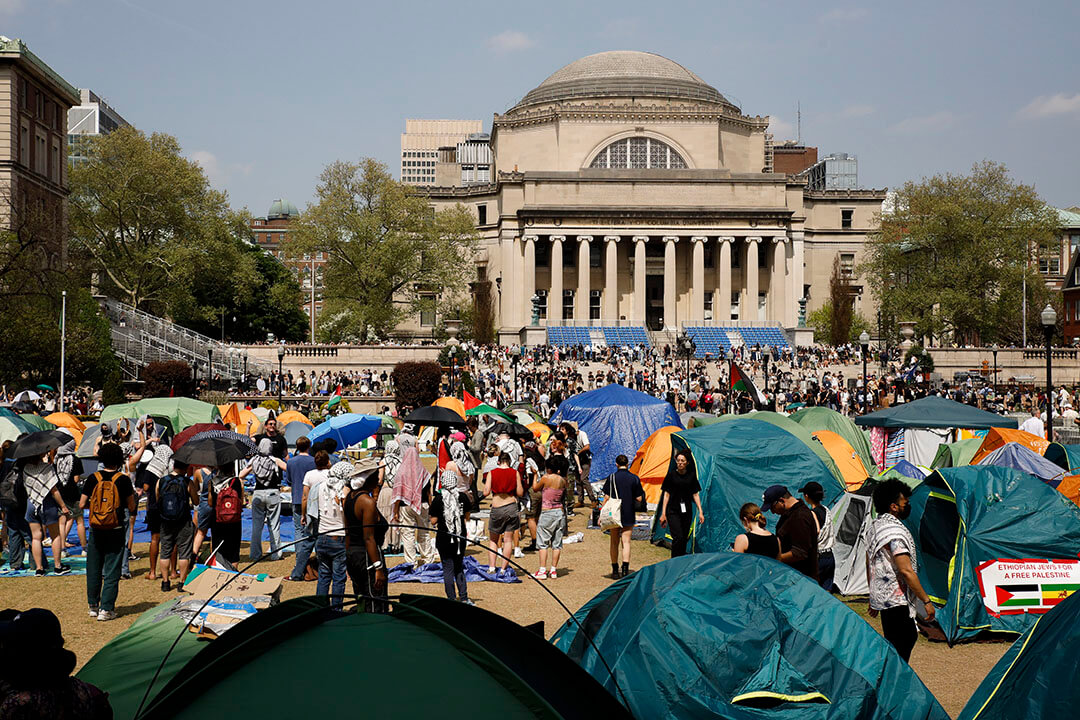As protests over the war in Gaza spread across college campuses, journalists are faced with complicated editorial choices, including what images to show, what words to use to describe the people and issues involved, whether to cover the protests at all and if so, how much space to devote.
The answers to these questions are rooted in the needs of the audience the news organization serves. After talking with many journalists who are questioning how best to proceed, I began to see a framework taking shape. Here’s a series of questions I’ve been asking as I help newsrooms make daily decisions about how to cover protests:
- What’s the journalistic purpose of each story? Is it to document that a protest is happening? Or, is your newsroom informing the audience of disruptions that might be caused by the protest? Are you covering the official reaction to the protest from authorities, be they college presidents or city police? You may not always know the answers to these questions when you send reporters and photographers out to cover a protest. If you have clarity on these questions as stories are crafted, it’s easier to decide what information to include. Stories with a clear, singular focus create more understanding for the consumer. Think light, not heat.
- Does each piece of documentation serve the journalistic purpose you’ve identified? Do the photos, audio and videos support the story you are trying to tell? Are the quotes from sources relevant to your journalistic purpose? This may require that newsroom editors be in communication with reporters and photographers who are out in the field about how the story is evolving and what the possible focus might be.
- Are all the facts used in the appropriate context? When a protester or a counter demonstrator uses inflammatory language, is it an anomaly or does that reflect the general sentiments? If 12 people are arrested, but 200 people protest without getting arrested, what separates their experience? If you don’t have the context, tell the audience what you don’t know.
- How can you tell the audience what your journalistic purpose is? Basic headlines that declare the intentions of the story (Day 3 of protests on local campus or Police and protesters clash: Here’s what happened) are effective in delivering the basic story to people. They answer the question: What’s going on?
- What terms and phrases best describe the various groups? Use “pro” and “anti” with caution. Or avoid them all-together. Instead, describe what protesters are hoping to accomplish, (e.g. “protesters who want the college to divest in companies that support Israel.” or “who want to pressure Israel to agree to a cease-fire.” or “who want to pressure the U.S. government to stop supporting Israel.”) Yes, this requires using more words than simple phrases like “pro-Palestinian.” More words are often needed. When it’s not clear or unified what protesters want, then tell the audience that protesters have a variety of motives and cite several examples from people participating in the protest.
- What will you do about explosive language or hate speech? The most important step in answering this question is to be informed enough to know what could be perceived as hate speech. When someone calls the Israel’s war in Gaza a genocide or directly or indirectly questions Israel’s right to exist, it’s vitally important to get the context right. Are they intentionally sending this message? Can they justify their choice of words? Can the journalist add in additional perspective or context so that consumers can understand where the rhetoric sits in the bigger picture? When using quotes that could be perceived as hate speech as examples of the type of behavior that authorities want to curb, it’s critical to point out why the speech is considered offensive.
- What needs explaining? Stories that answer simple questions are helpful to news consumers. Why are they protesting? Why are police arresting protesters? What is the line between free speech and hate speech? Why do college presidents want the protests to stop? How will the protests impact the war in Gaza? Building stories that answer questions for your audience may be more informative than covering the protests every day.
- Is your audience getting news of the war? Critics have recently suggested that coverage of the protests may be crowding out coverage of the war itself. That’s not entirely fair because it’s a completely different set of resources that cover the war. And, when delivering stories about the protests, editors and designers can build links and other logical pathways to stories about the war itself. Newsroom leaders should also monitor social posts and push alerts. Those resources, when over-utilized, could create the illusion that there are more stories about protests than about the actual war.
The deeply passionate beliefs and experiences around the Israeli war on Hamas in Gaza make every story about the conflict or related issues fraught with opportunities to stumble into unintentional harm. Covering the stories with deliberate intention and delivering them with care will help newsroom-wide audiences with diverse views.
If you find this framework helpful, or if you have added ideas that have been useful in shaping your coverage of protests, write us at ethics@poynter.org.







